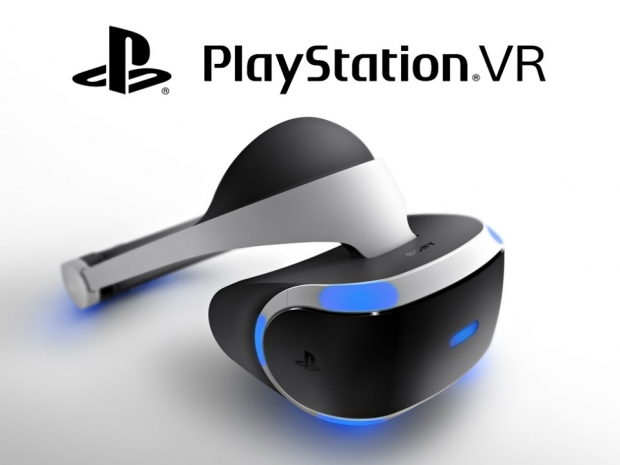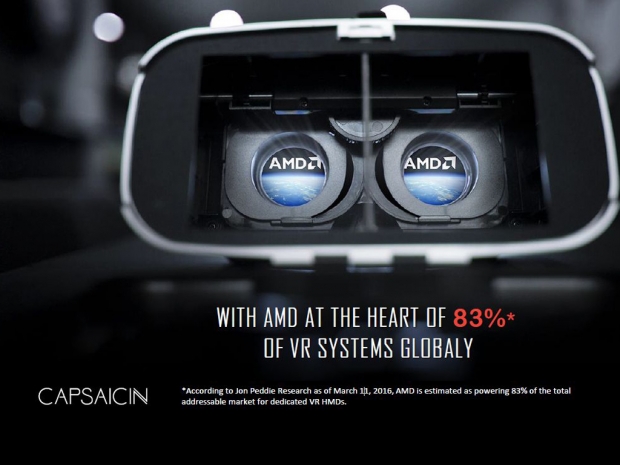Radeon Technology Group announced that "According to Jon Peddie Research as of March 11, 2016, AMD is estimated as powering 83 per cent of the total addressable market for dedicated VR HMDs."
JPR (Jon Peddie Research) is bullet proof and quite reliable source of market share and the figure surprised us. So we started to ask around where this 83 percent number came from. It turns out that the phrase "addressable market" gave the game away.
In 2015 Nvidia and AMD shipped close to 70 million high end ad-in-board discreet graphics cards. This gave us a clue of how many PC systems are VR ready. These are the numbers from JPR. Since you need a high end GPU to run Virtual Reality, as Oculus and Vive recommend Radeon 280, 290 or 300 generation of Fury cards. It also asks for Geforce 970 or faster if you want Nvidia. 
According to the same report, in Q4 2015 AMD had 21.1 percent of high end market share while Nvidia had 78.8 percent of high end market share. Compared to Q3 2015 AMD gained 2.3 percent market share. This is what raised our suspicion, how could a company that has 21.1 percent of total high end can get to 83 percent of the total addressable market for dedicated VR Head Mounted Displays?
The answer is rather simple; AMD includes PlayStation VR in this "total addressable market" for dedicated VR Head Mounted Displays number. This was confirmed by several graphics technology insiders. The GPU inside of PlayStation 4 is a semi-custom AMD GCN Radeon. It is a customized version of AMD's 7870 GPU with two compute units disabled. This is a Pitcairn GCN 1.0 28nm core that comes with maximum of 2.8 billion transistors in discrete variation. Since PlayStation GPU is part of the semi-custom 8-core AMD x86-64 Jaguar 1.6 GHz CPU integrated into APU it has to be significantly slower than a modern high end GPU.
To cut a long story short, the GPU on PlayStation 4 that powers PlayStation VR is seriously underpowered compared to a high end PC graphics card. AMD's Greenland should end up with 18 billion and Pascal with 17 billion transistors making them a few times faster than PlayStation VR.
We would not be surprised that Qualcomm steps in and claims that VR leadership. Qualcomm is the only company that shipped serious quantity of their SoCs in actual available systems.
Samsung Gear VR is powered with Adreno graphics wiht Snapdragon SoCs. They are have been shipped in hundreds of thousands if not even a million+ pieces. We could not gather any realistic market share numbers at the press time.
So the reality is that Qualcomm is the market leader at this time and that customers buying HTC Vive and Oculus have four to one chance of having an Nvidia card, at least according to Q4 2015 high end market share numbers. AMD will probably increase its GPU market share this year, but it will be hard to catch up with Nvidia.
The dual Fiji Radeon Pro Duo $1499 GPU announcement, combined with a roadmap for up to early 2018 and the big Virtual Reality push at the press conference has resulted with 7.94 percent of jump stock value. The jump is probably realistic as the company was undervalued to begin with and that things should start significantly improving in GPU and CPU market share during the second half of 2016.





